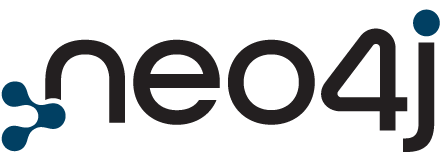DBMS > Memcached vs. Microsoft Azure Table Storage vs. Tarantool
System Properties Comparison Memcached vs. Microsoft Azure Table Storage vs. Tarantool
Please select another system to include it in the comparison.
| Editorial information provided by DB-Engines | ||||||||||||||||||||||||||||||||||||||||||||||||||||||||||||||||||||||||||||||||||||||||||||||||||
| Name | Memcached Xexclude from comparison | Microsoft Azure Table Storage Xexclude from comparison | Tarantool Xexclude from comparison | |||||||||||||||||||||||||||||||||||||||||||||||||||||||||||||||||||||||||||||||||||||||||||||||
| Description | In-memory key-value store, originally intended for caching | A Wide Column Store for rapid development using massive semi-structured datasets | In-memory computing platform with a flexible data schema for efficiently building high-performance applications | |||||||||||||||||||||||||||||||||||||||||||||||||||||||||||||||||||||||||||||||||||||||||||||||
| Primary database model | Key-value store | Wide column store | Document store Key-value store Relational DBMS | |||||||||||||||||||||||||||||||||||||||||||||||||||||||||||||||||||||||||||||||||||||||||||||||
| Secondary database models | Spatial DBMS | |||||||||||||||||||||||||||||||||||||||||||||||||||||||||||||||||||||||||||||||||||||||||||||||||
|
|
|
| |||||||||||||||||||||||||||||||||||||||||||||||||||||||||||||||||||||||||||||||||||||||||||||||
| Website | www.memcached.org | azure.microsoft.com/en-us/services/storage/tables | www.tarantool.io | |||||||||||||||||||||||||||||||||||||||||||||||||||||||||||||||||||||||||||||||||||||||||||||||
| Technical documentation | github.com/memcached/memcached/wiki | www.tarantool.io/en/doc | ||||||||||||||||||||||||||||||||||||||||||||||||||||||||||||||||||||||||||||||||||||||||||||||||
| Developer | Danga Interactive | Microsoft | VK | |||||||||||||||||||||||||||||||||||||||||||||||||||||||||||||||||||||||||||||||||||||||||||||||
| Initial release | 2003 | 2012 | 2008 | |||||||||||||||||||||||||||||||||||||||||||||||||||||||||||||||||||||||||||||||||||||||||||||||
| Current release | 1.6.29, June 2024 | 2.10.0, May 2022 | ||||||||||||||||||||||||||||||||||||||||||||||||||||||||||||||||||||||||||||||||||||||||||||||||
| License | Open Source | commercial | Open Source | |||||||||||||||||||||||||||||||||||||||||||||||||||||||||||||||||||||||||||||||||||||||||||||||
| Cloud-based only | no | yes | no | |||||||||||||||||||||||||||||||||||||||||||||||||||||||||||||||||||||||||||||||||||||||||||||||
| DBaaS offerings (sponsored links) Providers of DBaaS offerings, please contact us to be listed. | ||||||||||||||||||||||||||||||||||||||||||||||||||||||||||||||||||||||||||||||||||||||||||||||||||
| Implementation language | C | C and C++ | ||||||||||||||||||||||||||||||||||||||||||||||||||||||||||||||||||||||||||||||||||||||||||||||||
| Server operating systems | FreeBSD Linux OS X Unix Windows | hosted | BSD Linux macOS | |||||||||||||||||||||||||||||||||||||||||||||||||||||||||||||||||||||||||||||||||||||||||||||||
| Data scheme | schema-free | schema-free | Flexible data schema: relational definition for tables with ability to store json-like documents in columns | |||||||||||||||||||||||||||||||||||||||||||||||||||||||||||||||||||||||||||||||||||||||||||||||
| Typing | no | yes | string, double, decimal, uuid, integer, blob, boolean, datetime | |||||||||||||||||||||||||||||||||||||||||||||||||||||||||||||||||||||||||||||||||||||||||||||||
| XML support | no | no | ||||||||||||||||||||||||||||||||||||||||||||||||||||||||||||||||||||||||||||||||||||||||||||||||
| Secondary indexes | no | no | yes | |||||||||||||||||||||||||||||||||||||||||||||||||||||||||||||||||||||||||||||||||||||||||||||||
| SQL | no | no | Full-featured ANSI SQL support | |||||||||||||||||||||||||||||||||||||||||||||||||||||||||||||||||||||||||||||||||||||||||||||||
| APIs and other access methods | Proprietary protocol | RESTful HTTP API | Open binary protocol | |||||||||||||||||||||||||||||||||||||||||||||||||||||||||||||||||||||||||||||||||||||||||||||||
| Supported programming languages | .Net C C++ ColdFusion Erlang Java Lisp Lua OCaml Perl PHP Python Ruby | .Net C# C++ Java JavaScript (Node.js) PHP Python Ruby | C C# C++ Erlang Go Java JavaScript Lua Perl PHP Python Rust | |||||||||||||||||||||||||||||||||||||||||||||||||||||||||||||||||||||||||||||||||||||||||||||||
| Server-side scripts | no | no | Lua, C and SQL stored procedures | |||||||||||||||||||||||||||||||||||||||||||||||||||||||||||||||||||||||||||||||||||||||||||||||
| Triggers | no | no | yes, before/after data modification events, on replication events, client session events | |||||||||||||||||||||||||||||||||||||||||||||||||||||||||||||||||||||||||||||||||||||||||||||||
| Partitioning methods | none | Sharding | Sharding, partitioned with virtual buckets by user defined affinity key. Live resharding for scale up and scale down without maintenance downtime. | |||||||||||||||||||||||||||||||||||||||||||||||||||||||||||||||||||||||||||||||||||||||||||||||
| Replication methods | none | yes | Asynchronous replication with multi-master option Configurable replication topology (full-mesh, chain, star) Synchronous quorum replication (with Raft) | |||||||||||||||||||||||||||||||||||||||||||||||||||||||||||||||||||||||||||||||||||||||||||||||
| MapReduce | no | no | ||||||||||||||||||||||||||||||||||||||||||||||||||||||||||||||||||||||||||||||||||||||||||||||||
| Consistency concepts | Immediate Consistency | Casual consistency across sharding partitions Eventual consistency within replicaset partition Immediate Consistency within single instance Sequential consistency including linearizable read within replicaset partition | ||||||||||||||||||||||||||||||||||||||||||||||||||||||||||||||||||||||||||||||||||||||||||||||||
| Foreign keys | no | no | yes | |||||||||||||||||||||||||||||||||||||||||||||||||||||||||||||||||||||||||||||||||||||||||||||||
| Transaction concepts | no | optimistic locking | ACID, with serializable isolation and linearizable read (within partition); Configurable MVCC (within partition); No cross-shard distributed transactions | |||||||||||||||||||||||||||||||||||||||||||||||||||||||||||||||||||||||||||||||||||||||||||||||
| Concurrency | yes | yes | yes, cooperative multitasking | |||||||||||||||||||||||||||||||||||||||||||||||||||||||||||||||||||||||||||||||||||||||||||||||
| Durability | no | yes | yes, write ahead logging | |||||||||||||||||||||||||||||||||||||||||||||||||||||||||||||||||||||||||||||||||||||||||||||||
| In-memory capabilities | no | yes, full featured in-memory storage engine with persistence | ||||||||||||||||||||||||||||||||||||||||||||||||||||||||||||||||||||||||||||||||||||||||||||||||
| User concepts | yes | Access rights based on private key authentication or shared access signatures | Access Control Lists Mutual TLS authentication for Tarantol Enterprise Password based authentication Role-based access control (RBAC) and LDAP for Tarantol Enterprise Users and Roles | |||||||||||||||||||||||||||||||||||||||||||||||||||||||||||||||||||||||||||||||||||||||||||||||
More information provided by the system vendorWe invite representatives of system vendors to contact us for updating and extending the system information, | ||||||||||||||||||||||||||||||||||||||||||||||||||||||||||||||||||||||||||||||||||||||||||||||||||
Related products and servicesWe invite representatives of vendors of related products to contact us for presenting information about their offerings here. | ||||||||||||||||||||||||||||||||||||||||||||||||||||||||||||||||||||||||||||||||||||||||||||||||||
| More resources | ||||||||||||||||||||||||||||||||||||||||||||||||||||||||||||||||||||||||||||||||||||||||||||||||||
| Memcached | Microsoft Azure Table Storage | Tarantool | ||||||||||||||||||||||||||||||||||||||||||||||||||||||||||||||||||||||||||||||||||||||||||||||||
| DB-Engines blog posts | Redis extends the lead in the DB-Engines key-value store ranking New DB-Engines Ranking shows the popularity of database management systems | Data processing speed and reliability: in-memory synchronous replication Use Memcached for Java enterprise performance, Part 1: Architecture and setup Cache vs. Database: Has Performance Converged? Memcrashed - Major amplification attacks from UDP port 11211 How to secure ElasticCache in AWS WordPress Memcached: What It Is and How to Use It provided by Google News How to use Azure Table storage in .Net Working with Azure to Use and Manage Data Lakes How to Use C# Azure.Data.Tables SDK with Azure Cosmos DB Inside Azure File Storage One way to migrate data from Azure Blob Storage to Amazon S3 provided by Google News Tarantool Announces New Enterprise Version With Enhanced Scaling and Monitoring Capabilities VShard — horizontal scaling in Tarantool provided by Google News | ||||||||||||||||||||||||||||||||||||||||||||||||||||||||||||||||||||||||||||||||||||||||||||||||
Share this page




